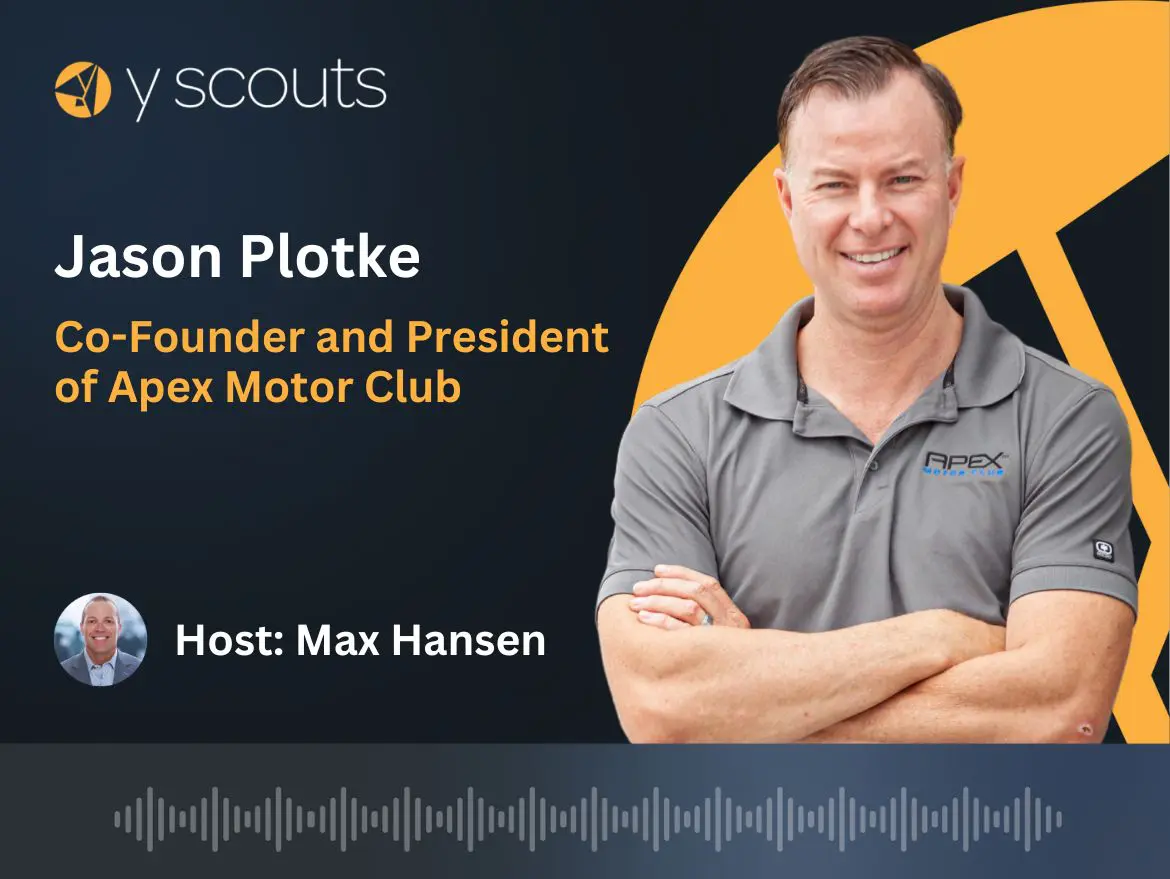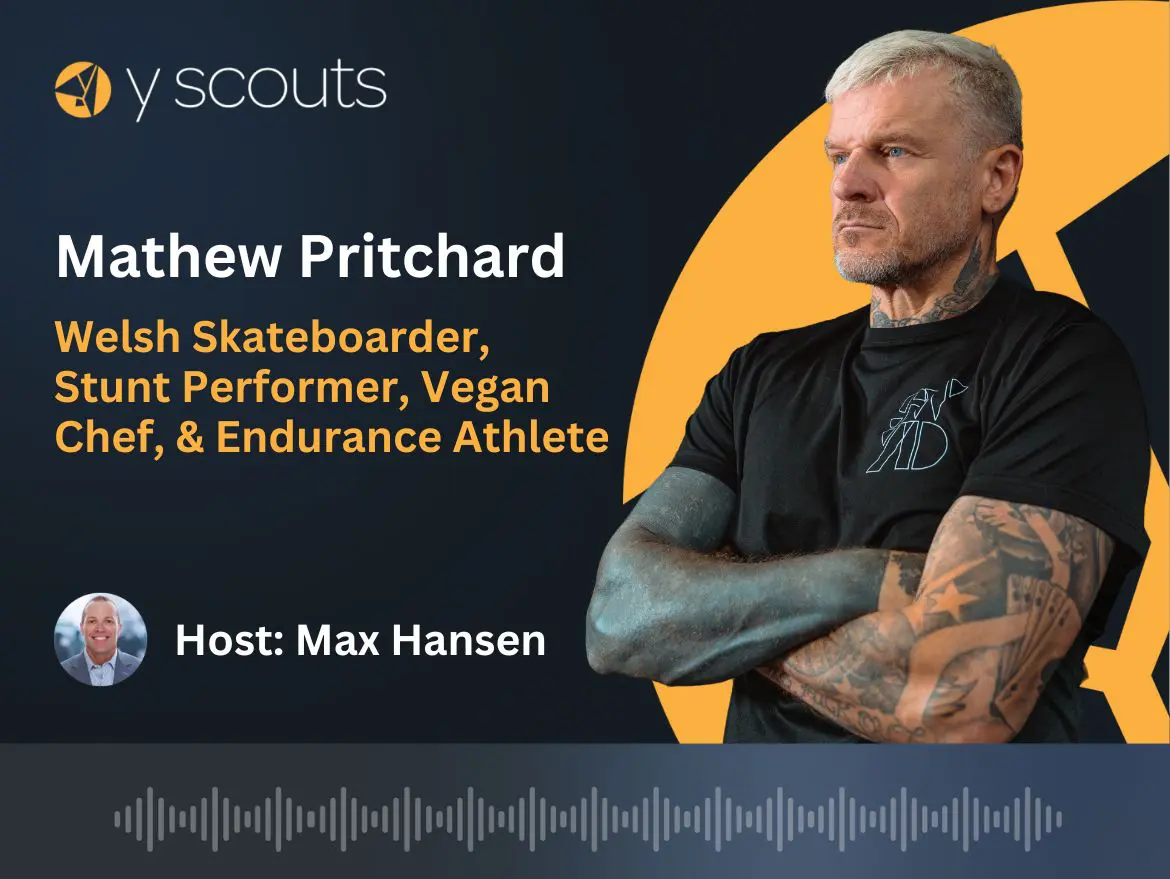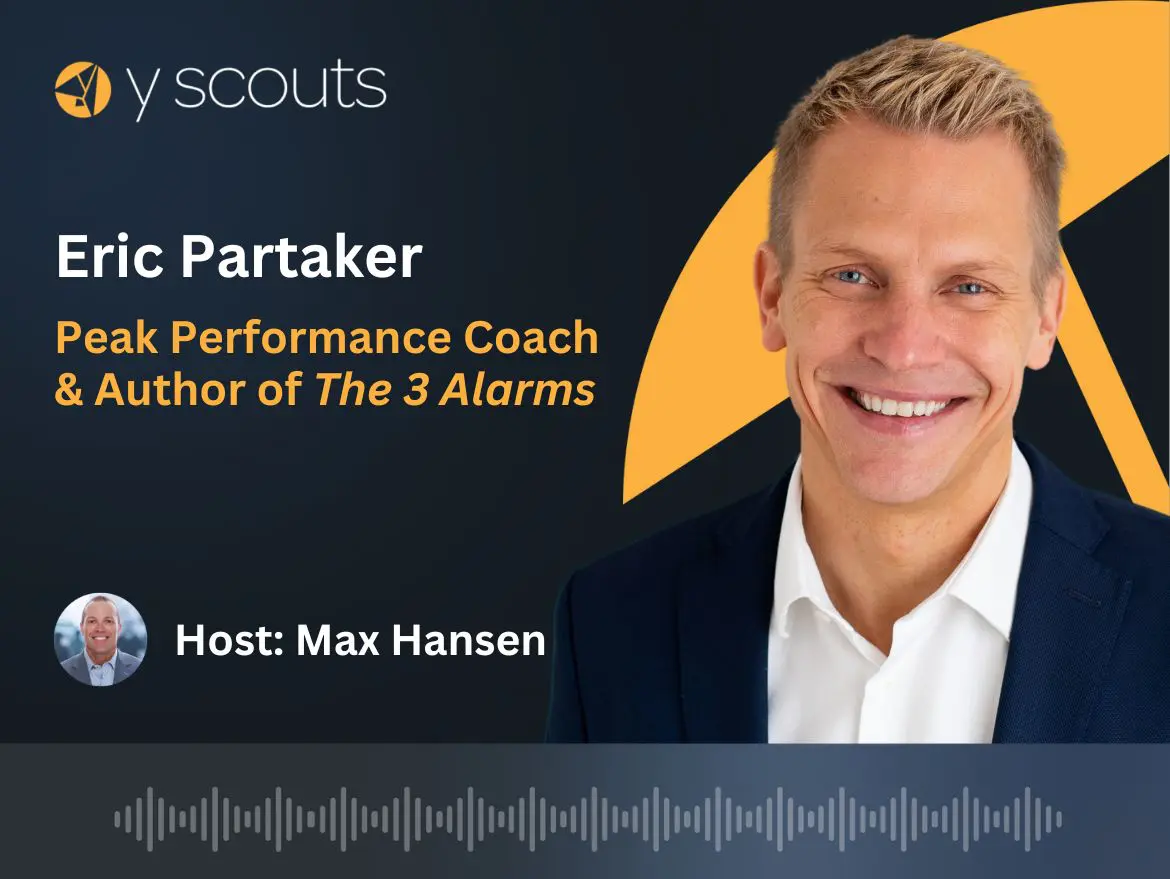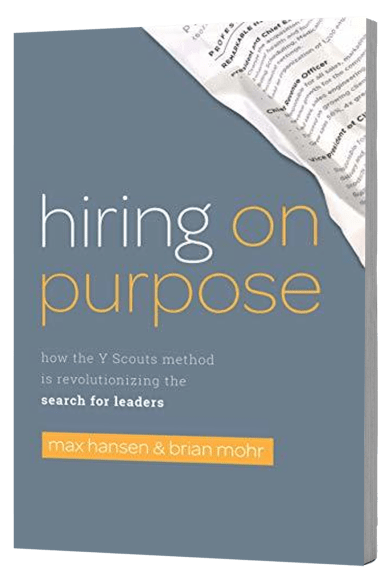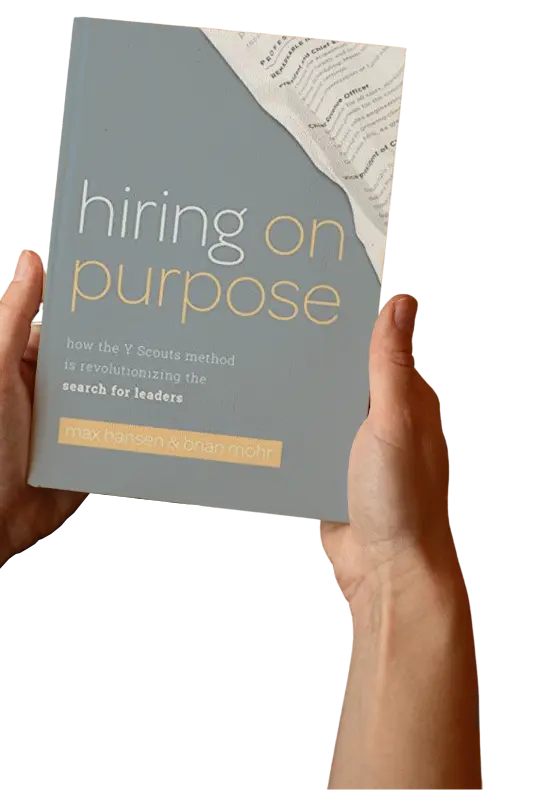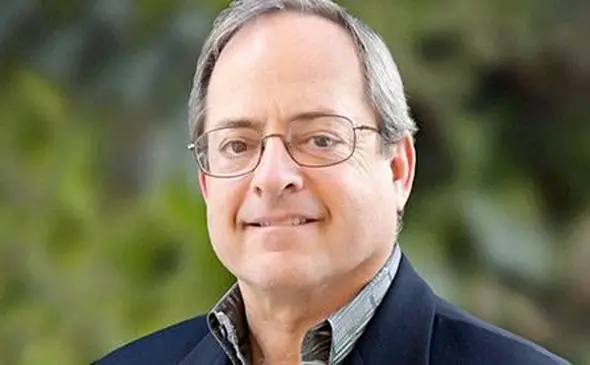
Vince Siciliano wants to change the way people think about banking – and the way they use their money. And in this episode, we’ll explore the concept that banking should be for people, planet and profit.
Here is the transcribed interview:
Well, thank you so much for joining us, Vince. I appreciate it. I want to jump right in, and I want to actually focus on New Resource Bank’s mission. It is in big, bold letters and your mission is to promote well-being for all people and the planet. And when you think about a bank’s mission, typically, that wouldn’t be first and foremost for most banks as we know it today. I’d love for you to maybe elaborate a little bit on your mission and how that came to be.
Sure, and it’s nice to be with you today. So thank you, Brian. The fundamental belief, the “why” behind all this is that we believe that money and banking can be used to do good in our society, that it can help achieve well-being for people and the planet. So coming from that fundamental belief, we, as a bank, use money to help achieve that mission. And that really just means that we lend other people’s money plus our own capital to businesses and nonprofits that are working to achieve well-being for people.
And another way of putting that is that they’re triple bottom line organizations. In other words, they’re managing not only for a finance return, but also for a social and environmental return. They’re conscious of how they run their business from an inside perspective and how they treat employees. They’re conscious how they impact the community around them, and they’re conscious about their environmental footprints and statement about resource usage. So, does that help you?
It does. Absolutely. You once said in an editorial piece that I came across that money is a store of value and values. Can you elaborate a little bit on what you meant by that?
Right. So the classic definition of money is that it’s a store of value. In other words, you hold a currency in your hand and it represents a certain value that you can exchange. So it’s both a store of value and it’s a medium or a method to exchange goods and services. And my comment is that money is a store of your values so that you, as an individual, have certain values and you can decide how you spend your money. Do you go buy a cup of coffee from just an ordinary coffee company that may be buying its coffee from a third world country at very disadvantageous exchange terms for the people who produce the coffee?
Or do you buy Fair Trade coffee which says that those farmers are receiving something that’s at the world market price rather than a substantial discount to it, and therefore, you may pay a little bit more, but you’ve recognized your value, your personal value that you wanted to treat people fairly in the economic system. So the way you spend your money represents your values, and you can use it to change things.
So the comment that I know you’ve made before or the question, do you know where your money spends the night? That really is a great example and a great question of how individuals choose to express their values through their money.
That’s completely right because unless you leave your money in your mattress, which nobody does, it doesn’t…or at least they shouldn’t, it doesn’t actually sit in a vault. Most banks don’t even have vaults anymore. So it’s not in a vault, it’s actually somewhere doing something, and it is spending the night. It’s not sleeping at night. It’s spending the night doing something somewhere, and if you could get on a dollar bill and fly around the world, would you be happy to see what your money is supporting and doing? And you can be conscious about that.
One of the things that’s interesting is the emphasis that New Resource Bank has on working almost exclusively with very values-driven organizations, and that maybe exclusively a 100% exclusively. How do you really measure whether or not a client of New Resource Bank is truly a values-driven borrower?
I would say that we lend to companies that promote our mission, and because there really are two kinds of companies. There are those that have a green product. So, for example, they may be producing organic cheese or they may be installing solar panels and helping solar energy grow and prosper in the marketplace. Those people have a green product, and the other group is going to be a group of people that are values-based, and so they are running their businesses regardless of product from the perspective of people, prosperity, planet of triple bottom line. So those groups don’t completely overlap. That solar energy company maybe not really be a values-based business. But it is definitely a green business that’s helping to promote use of alternative energy.
On the other hand, your values-based business can be anything. It can be a manufacturer. It can be an energy company. There are all kinds of businesses. So not everybody is values-based, but everybody we lend to fits our mission either because they’re values-based or because they’re good or service promotes well-being for the community in terms of environmental protection or community benefit. So go back to your question, we’ve used the survey for years which it’s a short survey online and we just convert it to one that’s actually put out by B Lab, and it helps us understand what’s the thinking and resource usages of our clients. It shows us where they are. But we see it as a journey. We see it as a journey from just beginning, and learning, and thinking about these things. It’s a journey of both competence and commitment. Competence being what do you know about sustainability. And commitment being what leadership and resources are you putting behind it.
So we see that as a journey that people can be a learner, an achiever, a leader, or a champion. But I always say, “We don’t care if you’re a learner or a leader, just that you’re on that road.” So our clients have a lower benchmark, sort of a starting point. They have to be in the ballpark of sustainability in terms of what they’re producing or their own values orientation. And then we hope that we helped them grow and develop their business and their commitment to well-being as they go forward.
This distinction between the green products or services that a company produces or manufactures, and that of organizations that their product or service may not be green in its approach to the external world, but are instead very values-driven internally, sounds a lot like Raj Sisodia, one of the co-authors of “Conscious Capitalism.” And he talks about, in many of his public speaking engagements, the twin engines of purpose. And an organization’s purpose can be something that seeks to make a very meaningful difference in the world for its clients or customers, those that it serves.
Or like you had said, there’s those organizations out there, maybe what they manufacture is some sort of a widget and its difference in the world maybe minimal as a direct difference in the world. But those companies instead choose to focus on their internal culture and the people that they hire and an investment that they make in people so that if they do choose to leave the company, they will have left a better person. And that is just as much a very purpose-driven organization who’s focused on its people as one that is focused on creating some sort of a very meaningful type product or service for the external world.
That’s very well summarized, but I would add a little twist to that, and it shows me that I wasn’t as clear as I should be. And that is that the companies that are not necessarily producing a green product, I didn’t mean to imply that they could be producing any product as long as they’re treating their employees well, and as long as they’re worrying about their impact in the community. No, their product still has to be a product that is not harmful to the environment. It has some social good to it. I think what I was really trying to contrast is that just because a company has a green product, doesn’t make them very values-based, or even a great employer necessarily.
On the other hand, those that are values-based, we expect the fundamental product that they are putting out to be at least good for the community and as well as the way they treat their employees, and the impact they’re having on the community. Is that more clear?
No. It’s very clear, and I certainly didn’t mean to confuse any of our audience through my summary of the twin engines of purpose. That’s very clear, appreciate the clarification. Super curious for a moment. So you obviously have had a number of very senior leadership roles in the banking community, and New Resource certainly seems to be somewhat of a different direction for you and your career. Moving from some of the larger, perhaps more traditional banking background to this triple bottom line, focused type organization in the banking industries, that a fair assessment?
Well yes and no. And the no part is that actually back in college, I majored undergraduate in something called Human Biology which was really all about human systems, both the social and physical, and biological aspects of human systems. And so that was an interest of mine because I was committed to environmentalism, and I went on to graduate school and got a Master’s degree in environmental planning. So I actually have all that in my background, and then as it happens to young people, I just jumped into a job at one point. I needed a job and I went to work for Bank of America, and lo and behold, I spent 10 years with Bank of America which was never part of the plan nor was business part of the plan.
So it’s the unpredictability if you study…one can study one thing and then go off in a different direction. But I left Bank of America, and after that, I was always working with community banks, far smaller financial institutions. And in that process, as I learned more and more about becoming a leader, I became what I called a values-based leader and used a different version of the triple bottom line which really focused on, if you make it a great place to work, i.e. you have gung-ho employees, it will be a great place to bank. In other words, you will have raving fan clients, and then it will be a great place to invest.
Different version of the triple bottom line, but still fundamentally a more values-based company. And it wasn’t until I was called one day, I had left my last bank and I was pondering the future, and tired of seeing banks that grow, and are really built for sale, they’re not built to last because it’s the business of building and selling a bank. And they basically sell the bank to the very banks that they criticize as being non-relationship oriented, and then they go out and do it all over again. So I was tired of that model, and I received a call from a search firm about New Resource Bank which was a values-based mission oriented bank. And I was surprised. I didn’t really know about those kinds of banks. And as it turns out, there are almost none, but that for me, was coming full circle. It picked up on the values-based leadership that I was already trying to model. Then it went full circle in terms of the environmental background that I’ve had years before.
So your overall leadership philosophy, how would you describe it?
I guess a couple of different perspectives, one is that I see leadership as an inside out job. In other words, it really starts with what’s going on inside the leader, where are they in terms of their own personal growth and development. And in particular, what can one say about the heart, the head, and the hands of a leader, which is a model that I’ve adapted from other places. And so when you look at the heart of a leader, particularly the motivation and character of a leader, why are they doing what they are doing.
And to what degree is it really a personal motivation, one about getting ahead, one about really promoting the self as opposed to one that is more invested in the community. And I realized that there’s a constant tug of war between what I need and what you need. So it’s not like I’m a saint, but I think there is this inner journey about ego, and then the head of a leader is really what are the thinking and beliefs about leadership. And then the hands are really, how do you carry that out.
So it’s a journey to learn…it’s an inside out journey because if you’re not wholehearted on the inside, then you’re going to default on the outside to the world’s values of leadership which really are about accomplishments and the approval of others. It’s all about what you own, what you do, and what other people think of you, how successful are you in terms of accomplishment and getting the rewards of accomplishment including the approval of others.
So that’s the first part, inside out journey. Does that make sense?
That makes perfect sense. It sounds like there’s a second part.
Well the second part then really has…it does have to do with the thinking and belief. So I believe one has to be extremely clear about the why. I liked Simon Sinek book and TED talk on the why. What do you believe so strongly and that causes you to do what you do? And that’s usually hard for people to answer the question about the why. They default very quickly to how they do something and what they do. But in the case of…
You think that’s because we don’t…with the way our society is is we’re so focused on the what and the how, and it’s just features and benefits as opposed to really understanding at a deeper level, that real essence or the non-financial reason why we all go to work?
I think you’re absolutely right. It becomes tied to our sense of significance or personal self-worth. It’s what I do and how I do it, and whereas the why which is really the purpose-driven business or the more conscious leader, you really get into…the belief that I mentioned about New Resource Bank. We believe that money and banking can be used to do good. So then that either turns people off or excites them. And then you can get into, “Well, how do you that exactly? And what is it that you do?” And so I think being really clear about the why you’re doing something, the mission statement comes right out of that. What’s the picture of success? If you’ve been doing this for 10 years, what’s your vision for the future, and can you really articulate that? And then can you pretty succinctly come up with a strategy that you can share with the people that you’re going to work with.
Yeah, you know, it’s interesting. You look at a lot of publicly traded organizations, and I think all of the leaders at those organizations would say that there is a why behind what they do and a guiding North Star. However, I think one might also make the argument that given the quarterly expectations of the markets, that oftentimes, short term decisions are made to satisfy shareholders that might not necessarily be congruent with the North Star, or the why, or the purpose of the organization. And these short term decisions can sometimes override what would otherwise be an incredibly noble purpose or why behind the company’s existence. And my question for you is will this ever change if we continue to allow the shareholders and the markets to dictate the way businesses are being run, at least those that are publicly traded?
It’s a great question, and I agree with you that some other companies have a more noble purpose. I actually think that when one starts talking this way, one runs squarely into those who are readers of the Wall Street Journal, for example, which claims very clearly that it’s about shareholder value as defined by maximizing return on investment. And any other goal, any other social purpose or environmental purpose is “an inefficient and ineffective use of capital.”
Sure. Sounds like Milton Friedman.
Yeah. This is not adopted by a lot of people. And so they really don’t have a noble why behind what they do. But some do, and I think that frankly, I thought a lot about this, and I don’t think the social sector giving a lot of speeches is really going to help. I think what’s going to help…it’s a good thing to do to educate and to cast the vision about what it might be. But what I really see is the millennial generation coming up, and that is wrestling with this issue of purpose and why and trying to integrate it into their lives from the get go rather than maybe having to spend 10 or 20 years in jail doing something else in order to earn the freedom to be the person that they felt they’ve always wanted to be.
So I have high hopes for millennials, for the aspirational people, those that are buying things that are beginning now. I think the data varies, but it looks like maybe we’re well into the 30 plus percent of people that are now buying with a purpose and values in mind. And the same goes true for the new generation that has purpose in their hearts and doesn’t want to squelch it. That’s, I guess, a 30% number or 28% number as well. That’s what’s going to drag us forward into a different setting.
You talk about the millennial generation and you look at specifically the way companies are being led today. And there is this war for talent that we’ve been hearing about for decades, and the best of the best are always…it’s always a challenge to get the best people. With the millennials soon to be a majority of the working population, why do you think leadership has had such a hard time embracing these concepts that we’re talking about? Why it’s important to have a North Star and to have that be the absolute guiding light of what the company does when tough decisions need to be made. They will always choose in favor of their purpose or their North Star. Why is leadership struggling so much with this notion?
It just runs afoul of raw capitalism. So in the day when de Tocqueville wrote his book in 1830s “Democracy in America,” he described this tripod of capitalism, religion, and democracy. And at that point, I would say today, democracy is, certainly in Washington, seems to be captured by special interest. Religion has really moved out of the public square. It’s much more diverse and not such a presence in the public square, so we really are in an era of raw capitalism, which says maximize financial returns. And then you can do whatever you want with the money. So that really is the system, and when you look at the financial crisis we went through over the last 10 years, the banks are still…at least once a week, we’re reading about another 150 million fine there, half a billion fine there. It doesn’t seem to matter.
They are still marching to the drummer of maximize financial return, and therefore, they’re looking for people that are going to march the drummer of maximizing financial return. And there are plenty of people that are marching to that drummer. And furthermore, the temptations are enormous. If you’re sitting at a desk and you know that if you can pull this trade off, you’ve got a million dollar bonus. And if you can’t pull the trade off, nothing really happens to you. Most people are going to try for that million dollar bonus.
And I agree with you that as the millennials continue to dominate more of the workforce, that they seem to be predisposed to an organization like New Resource Bank that has a very clear purpose, and uses that as its guiding light for the organization. So hopefully the old way continues to erode year by year as the future unfolds.
Well I hope so. And Aaron Hurst, in his book, “The Purpose Economy,” says 28% of folks that are really purpose oriented. And I don’t know whether the millennial generation has a higher fraction than 28% but I hope so.
So do I. I want to switch gears just for a moment if we can, and there was a concept you talked about. I think it was in a previous interview you did. You spoke about the difference between fast money and slow money. And I was hoping you could share a little bit more about what you meant by that.
Let me give you an illustration, and then I’ll come back to the definition. So if I were to ask you…if I offered you a thousand dollars today or $5 million in a hundred years, which would you choose? A thousand dollars today or $5 million in a hundred years?
Well, being that I doubt that I’m going to be around in a hundred years, I’m going to have to go with the thousand dollars today.
Okay. So you and most people choose a thousand dollars today. And yet, if I said to you, what’s the value of the lives of your grandchildren in a hundred years, what would you say?
Well in excess of the thousand dollars that you might give me today.
Right. Priceless. So right there we have this conundrum that $5 million in a hundred years really is not worth much today. It’s only worth a thousand dollars. So the value of the future generation isn’t worth much today. There is no present value. There’s no seat at the table for the future generations. And that’s slow money versus fast money. Fast money is very much into building high rates of growth, high rates of profitability, high internal rate of return, high return on investment, short-term orientation.
And whereas slow money is taking a look over generations and saying, “What do we do that makes sense over generations?” And the problem with that trade off of $5 million versus the thousand dollars is that we have a discount rate in there, a rate of interest that you want to earn. Unless that rate of interest is high enough, you’d rather take the present value today. And if you’re not going to be around in a hundred years, then no matter how high it is, it probably doesn’t really matter.
So we’re not used to thinking long term. We’re not used to looking and making decisions a hundred years out. We are into a very current high growth, high return perspective and that’s fast money versus slow money. Does that help you?
That helps tremendously. So that concept then, how does it impact your leadership and that of your leadership team at New Resource Bank as you are thinking about the future of your organization?
We try to think longer term. We’re not worried about quarter to quarter. We have budgets and goals and we want to have normal rates of return or better. But we’re really looking several years at a time, and we have no exit strategy. We’re not building the bank for sale so that everybody can walk away from it and have it dissolved into some big bank. We are looking at a bank that we hope survives into the next generation and has an impact which goes beyond just the financial impact. All of that’s hard to value.
So if we can speak just for a moment about your team, and I know over the past few years, you’ve had some really high profile folks join the team. I believe recently and over the past handful of years, a CFO, a director of marketing and culture, and if I have the titles wrong, I apologize. But I know if you’ve added some…
No that’s all right.
Okay great. Some key leadership folks, obviously recruiting for leaders who fit who you are and what you stand for as a bank is probably not the easiest thing in the world or maybe it is. Can you just share a little bit about how you recruit and how you’re able to identify the right leaders who fit your mission and your purpose, and your values as an organization?
I would say that attracting and hiring people that fit our organizational mission and values has been the hardest thing that we do, or if not the hardest, one of the most difficult things we do. We can find people that are values-based but may not be financially oriented bankers. And we can find bankers that have a lot of skills but are not values-based, so marrying those two, having a sense of both of those in the same person has been a challenge. And more recently, what we’ve done is I borrowed a concept and I’m sure everybody’s heard about right people in the right seats which comes from Jim Collins.
There’s another book by Gino Wickman called “Traction,” and he takes that phrase and he uses it and then we’ve adapted even that, so that when we talk about right people in the right seats, right people is very simply described as there’s a personal sense of mission or purpose and values highly aligned with ours. And if that makes them the right person, nothing to do with their skills yet, just sense of mission and values. And if that doesn’t align, then don’t go any further.
And then the right seat is really a focus on the job that they’re going to have, and we are now working to understand what are the four or five critical roles of that job. The roles that they absolutely have to be good in in order to be successful as a CFO or as a head of HR, or as a lender, or any kind of position we have in the company, every position in the company, we’re looking at these critical roles. And so finding someone who can do both right person and right seat is at least we’re now clear on what we want. And that has helped us going forward. But there’s a lot of networking involved. Once in a while, we use a search firm. There are a lot of different ways but…lot of social media one can use. The best way if we can is to get referrals from people that know people.
Sure, absolutely. Was that a hard transition or a mindset shift for anybody within the organization to not get perhaps overly excited about the strength of, let’s say, a resume, and one’s experience who might be just a little bit off on the purpose and values alignment, or has that just been embraced wholeheartedly by everybody?
It was a hard transition because first of all, it was hard to find people that had both. And so at one point, we had defaulted more towards people that had mission sense, but that didn’t work. So then when we were having a hard time, we defaulted towards people that had the skills, the financial skills but frankly, they won’t stay. They won’t stay over the long run because this is just the stop along their career, and when someone says, “You have a great niche.” Well that’s a tip off that no, this is not a niche. This is about a whole philosophical approach to life. Or “I recycle,” again is not a great response. It’s nice that you recycle, but it doesn’t necessarily mean that you’re really thinking about the issues behind the need to recycle.
So it took us a while to finally understand that if we want to keep the people and have folks that are really committed to the mission and our co-laborers, co-leaders, if you will, co-thinkers about the mission, then we need to find folks that are both mission oriented and have the financial skills we need.
So as you think about other leaders whether they’re in the banking industry or in other industries, who are beginning to pursue this journey, this journey of becoming more conscious, this journey of thinking a bit more holistically, what advice would you give them for those that in their hearts, maybe they feel that, “Yeah, this is the right way to go. The future is heading this way.” But in their head, it keeps getting in the way that, “Oh well, it’s a maximized shareholder or investor value and it’s a zero sum game.” What advice would you give these leaders or encouraging words to go all in and follow this journey?
It’s not a simple transition. It is a challenge for people, and I think probably the first step is to go answer the question about why. Why are you in this business, really what’s the reason behind the business? And it’s not oh well to make money or to maximizing shareholder return. That falls out as one writer once said, that’s the applause from Campbell [inaudible 00:30:33] said that’s the applause from doing the job well is the profitability. But so to really get down to the why, and if you can connect with your own why, then that’s going to give you the deeper and more internal energy that’s going to enable you then to really look at your business and start small.
Start with let’s look inside the company first. Let’s look at the way we handle employees. Create a green team and look at how we purchase, how we use resources. Let’s look at our supply channel. Walmart is a great example. They look at their supply channels all over the world and had a huge impact. You can start with all those things first before you take on the capitalistic model and say, “You’re too short-term oriented,” and you start telling your shareholders that you changed your values. That’s going to come maybe down the road. But start with some of those smaller things first, but only after you’ve really looked inside yourself and found your own motivation.
So if a leader were to ask him or herself that question and they realized that their own internal motivation is out of alignment with maybe where they’re spending their days in the company that they’re leading. Do you think it’s wise for them to then pursue a different path or what would you say?
That’s a great question. It depends upon how much influence they have over the current situation they’re in because ultimately, if they really have come to that realization, now there’s disparity and that disparity is going to grind and burn, and be a problem. So you have a couple of choices, you can either start redirecting your department the way your department runs, and the way the company runs, the kinds of decisions the company makes in terms of the long term, short term, what’s a healthy product, what isn’t. If you can get some of that redirection going, then you might stay. But if you can’t, over time, you may start thinking about pushing off in a different direction. There’s this the idea that the second half of life or whatever it is, the next career can be one that’s more significant as opposed to just successful in narrow monetary terms.
That’s excellent. I think that’s probably a great place to finish, Vince. I want to thank you so much for spending some time with us and sharing a part of your journey with our audience. I know that they are going to take a lot from it. Once again, president and CEO, Vince Siciliano from New Resource Bank, and New Resource Bank’s mission is to promote well-being for all people and the planet. Vince, thanks a lot, really appreciate your time today, sir.
It’s been a pleasure. Thank you, Brian.
Listen to more episodes from the Built On Purpose podcast at yscouts.com/podcast.

